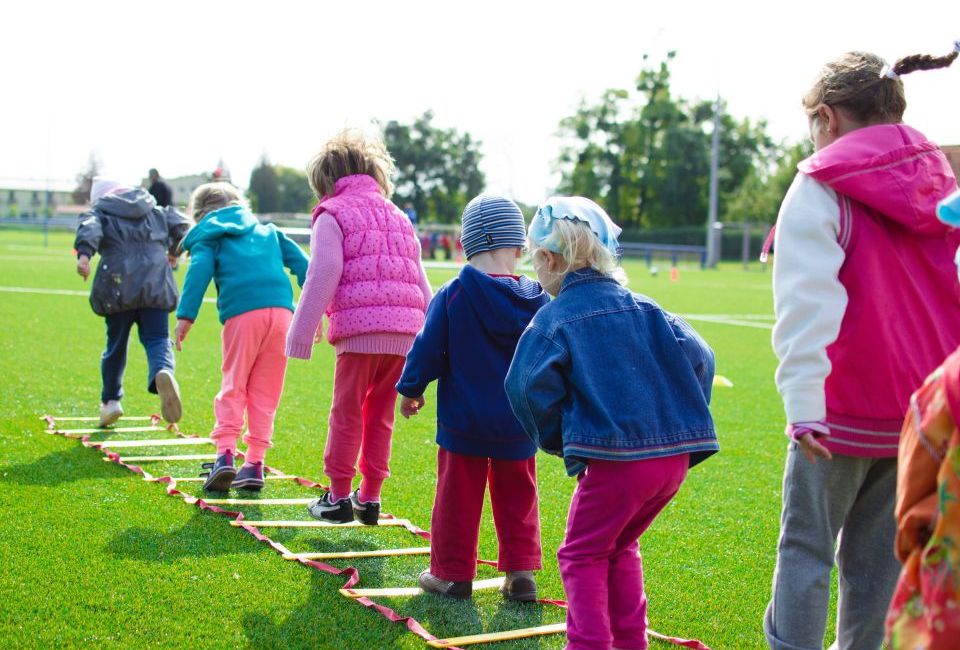
A study by Gonzalo Flores shows physical education teachers' perspectives on conflicts in multicultural schools
Physical Education classes in multicultural schools do not involve more conflicts than in Catalonia's others schools, and those that do arise are not triggered by the students' cultural differences but by other factors, such as families' socio-economic problems and the lack of attention that some children receive. That is the opinion of the majority of teachers in this field working in schools with high levels of cultural diversity, according to the study "El professorat d’educació física i la seva visió sobre els conflictes a una escola multicultural" [Physical education teachers and their view of conflicts at a multicultural school], which was published a few weeks ago in the journal Educar. The study is authored by Gonzalo Flores, a lecturer in Physical Education and Sports Sciences at the UVic-UCC, who also discusses it in a post on the UDivulga portal, with Maria Prat Grau, of the Autonomous University of Barcelona, and Susanna Soler, of the National Institute of Physical Education of Catalonia.
According to the study, physical education classes are one of the school scenarios where conflicts are most common or where they take place most frequently, especially in comparison with other subjects on the curriculum. The study looks at this subject in schools where the students' cultural background is more varied than at other schools. Based on interviews with teachers and non-participating observation in real class contexts, the study presents the viewpoint of teachers about the social image of multicultural schools in terms of tensions there, and identifies the main situations causing conflicts in the classrooms, and accounts for the reasons behind them.
To that end, the researchers compiled the opinions of Physical Education teachers working in primary schools where more than 50% of students are of foreign origin. The schools are mainly in the Barcelonès region, but also in the Vallès Occidental.
Neither more conflicts nor different conflicts
Most of the teachers interviewed dismiss the stereotypical image of multicultural schools as places of social tension. They say that the problems they have experienced are no different in terms of the quantity or the type to those at any other Catalan school. "Families' socio-economic problems, which lead to students behaving inappropriately in the classroom, and the lack of attention from their families that many children experience as a result of those social and economic problems" are key factors in understanding the conflicts that take place in class, explains Gonzalo Flores, referring to the results of the study.
At the same time, the teachers interviewed believe that "each child's personality has a great deal to do with the situation." Furthermore, in many cases they blame the authorities for "their inaction in terms of allocating sufficient resources or preventing an imbalance in schooling," and mention the characteristics of the social environment, e.g. "sink" schools in the most disadvantaged neighbourhoods, as a factor to be taken into account.
Verbal and physical attacks and "unconscious racism"
Among the most common sources of tension in Physical Education classes, the study highlights verbal and physical attacks, and racism that the teachers describe as unconscious: "most teachers don't think that the racist insults that are used in classrooms are disturbing or have a negative cultural connotation," explains Flores. He says that they consider them more in terms of "the use of derogatory terms that have unconsciously remained as part of the students' vocabulary, which they use in situations of tension." However, the researchers also make the proviso that "there is usually a tendency among teachers to ignore or disregard racial insults, and a desire to overlook" problems of this nature.
Another factor to take into account that is some students do not want to engage in physical contact with some of their classmates, often due to the colour of their skin ("cultural diversity can be a surprise to children of young ages") or their gender ("the role of women, which is undervalued in certain cultures, can cause problems when working in mixed groups)". The students' lack of engagement with the subject, their lack of knowledge of the language of instruction and a failure to observe certain standards of hygiene, such as bringing spare clothes, also contribute to making the classes less fluid. However, most teachers agree that the level of conflict at schools has declined significantly over the years, and since the first foreign students began to be taught in Catalan schools.
The researchers highlight teacher training as an essential factor in identifying and managing these situations. "Preventing and resolving all kinds of conflict, but particularly those of an ethnic-cultural nature, are crucial in guaranteeing the education of the future," says Flores. He believes that "trivialising certain situations or rendering them invisible can have serious consequences for both the students and for the future of society."